Art World
11 Acclaimed Artists Offer Strategies for Getting the Most Out of Working From Home, Whether From Your Studio or Bedroom Office
Alfredo Jaar, Cheryl Donegan, Ebony G. Patterson, and others offer advice.
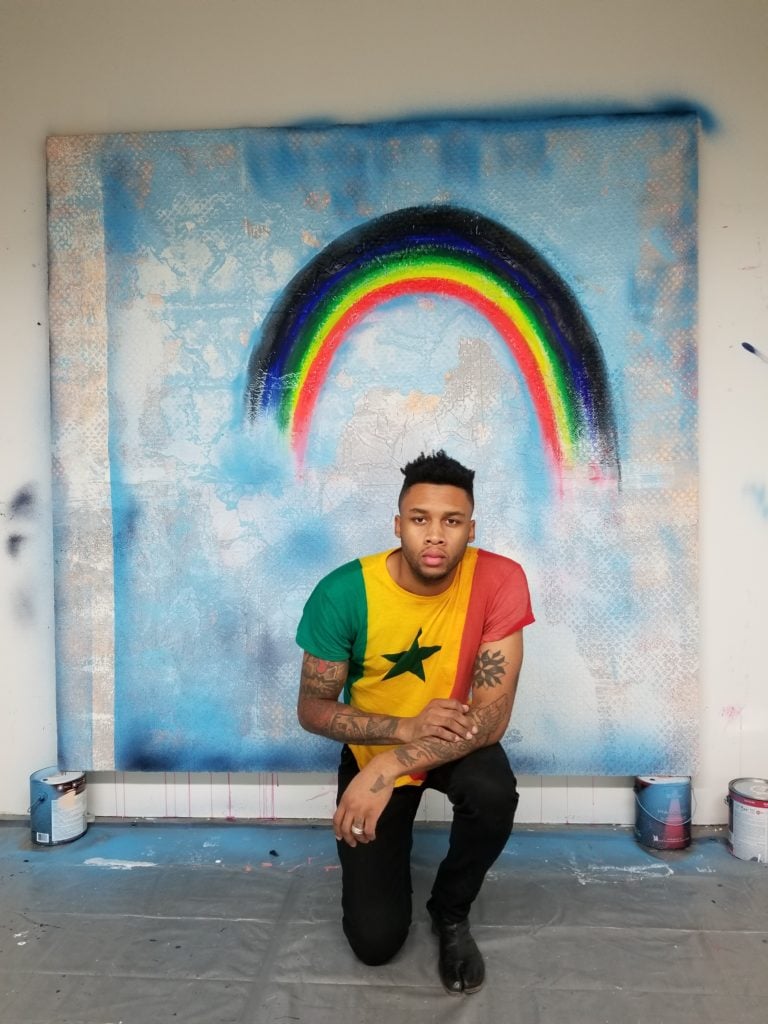
Alfredo Jaar, Cheryl Donegan, Ebony G. Patterson, and others offer advice.

Artnet News

What kind of skills do artists bring to these extraordinary times? We can think of a few, from creative problem solving to the capacity for empathy. But there’s one that you may not even have thought of as a skill: artists are world-class experts on working alone.
As we try to feel our way through our own new stay-at-home routines, we reached out to a few artists to see what advice they had to offer, and how they were coping with working from home now. Here’s what they had to say.
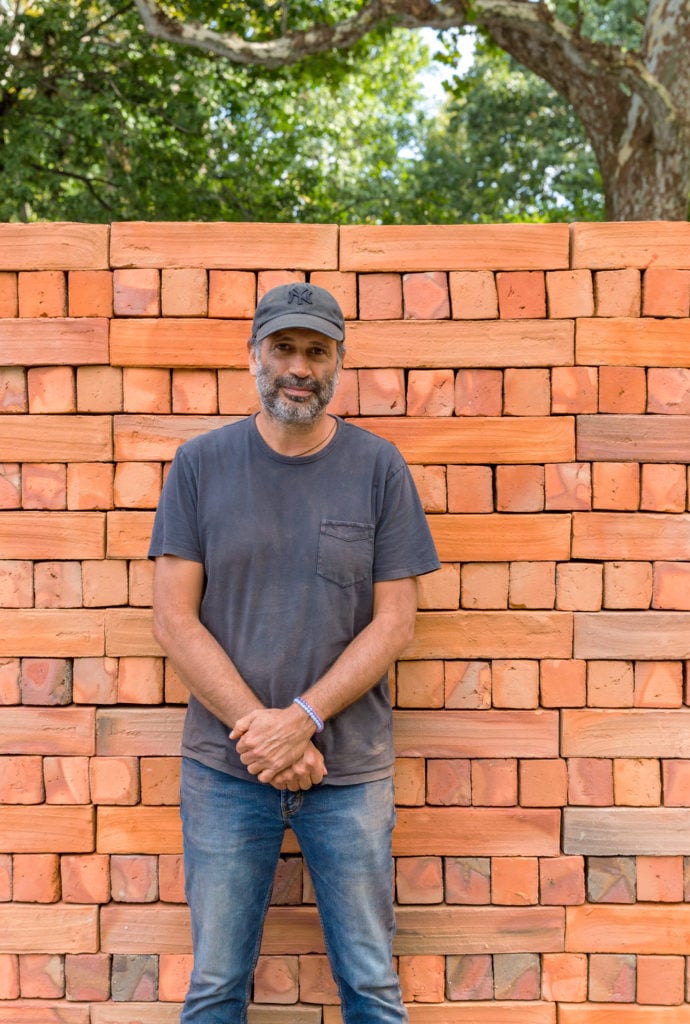
The artist Bosco Sodi. Photo courtesy of Paul Kasmin Gallery.
Use this time to read, to think, to concentrate on important things like family, and the process of creation. These are times to reorganize yourself. You don’t need a big space, you don’t need a big studio or gallery. Do your work: create your art.
—Bosco Sodi
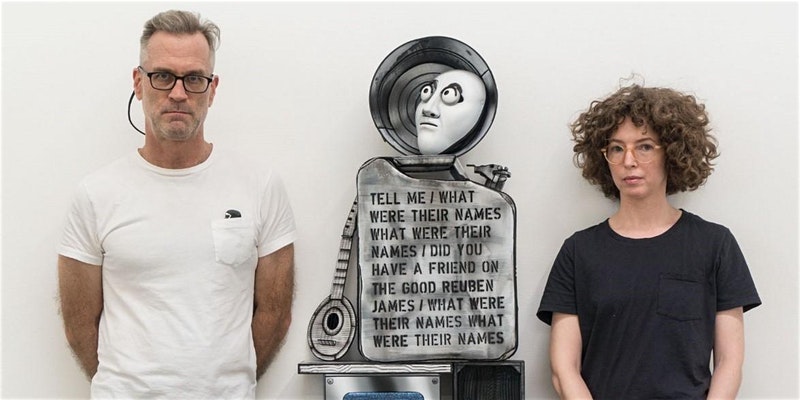
Mary Reid Kelley and Patrick Kelley. Courtesy of the artists.
It’s a form of kindness to curb your curiosity about what exactly your workmate is doing, and to give them space to cycle through periods of concentration and spacing out. It’s easy to feel entitled to look over a shoulder or say, “What are you doing?” But in the long run, checking most of these impulses makes for less anxiety, and more spontaneity and good ideas.
—Mary Reid Kelley and Patrick Kelley
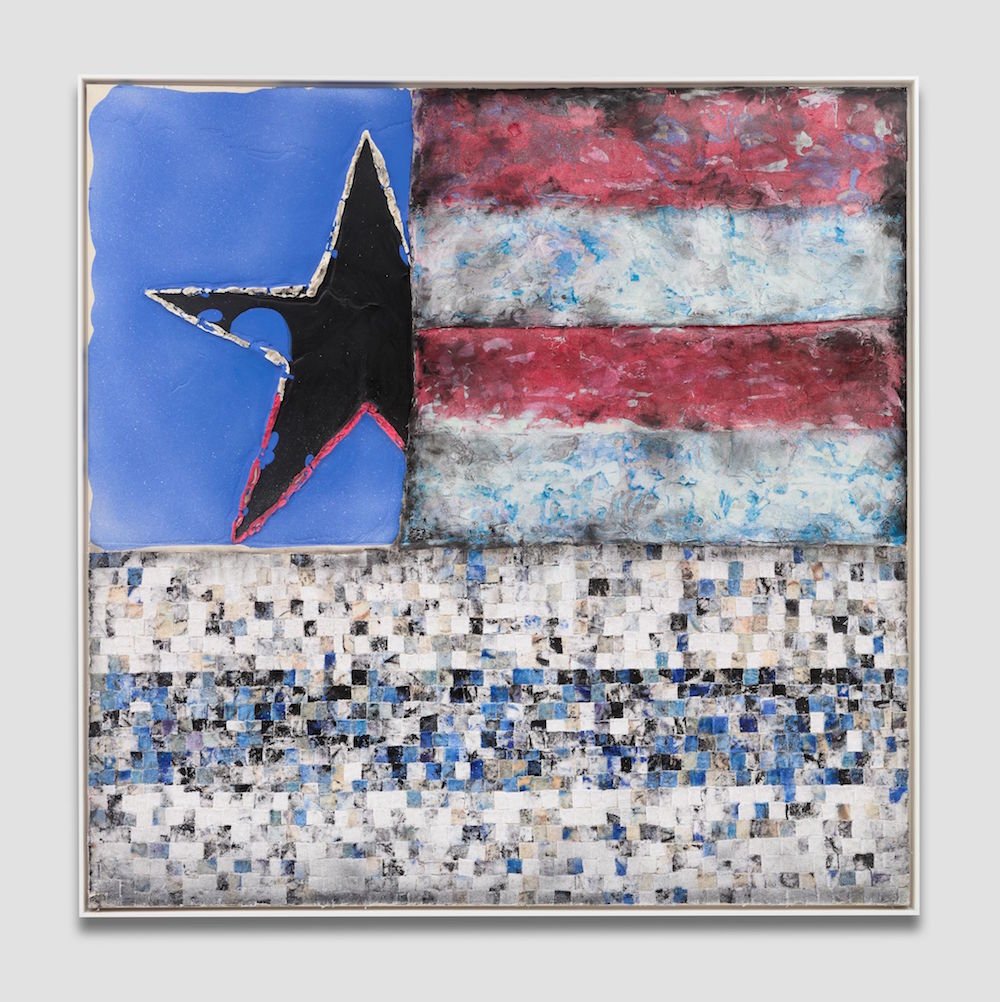
Vaughn Spann, Untitled (Flag) (2019). Photo by Matt Kroening. Image courtesy of the artist and Almine Rech, New York.
I was literally just speaking to a friend about this. I’ve been hoarding nitrile gloves and face masks for years now. I’ve disciplined myself to never begin working without putting them both on. Paints and other materials are highly toxic which I think gets overlooked a lot… while I love paint, I love my life much more so I think this is a great time to get back to basics as it relates to studio health and safety.
Protect yourself by washing your hands… other than that, call your loved ones, and check on them, especially your elders… I have a bluetooth speaker in my studio which allows me talk hands free. Perfect time to have long phone calls while working in isolation.
—Vaughn Spann
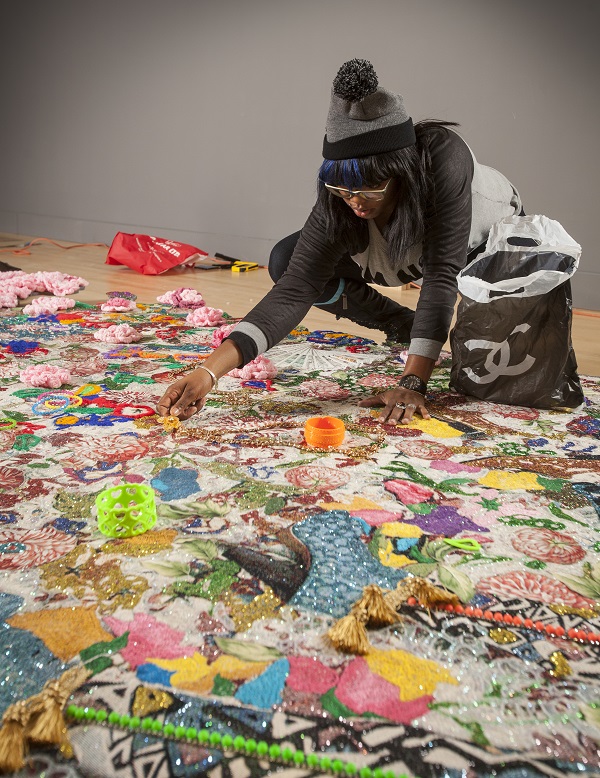
Ebony G. Patterson installing the exhibition Ebony G. Patterson: Dead Treez at the John Michael Kohler Arts Center, 2015. Image: Courtesy of the artist, photo: John Michael Kohler Arts Center.
I have honestly continued my routine of going to the studio each day. My studio is just four minute’s drive from my apartment in Chicago. I wash my hands as soon as get through the doors (home and studio) and change shoes. And I remember my mother’s words “sing happy birthday to time the washing,” and so I do. But the life of so many of us as artists is already isolation.
One thing that has definitely shifted has been travel. I had a few lectures that have been cancelled or postponed. I also cancelled my annual birthday trip this week home to Jamaica. But what’s been great about all of this is just being rooted in studio without disruption. I feel like I don’t have to rush to anything! So there has been an opportunity for mental ease and rest which made me even more aware of how tired I was! So it’s nice to just go to studio and be… if you get me? Just be… and stay healthy and careful…
—Ebony G. Patterson
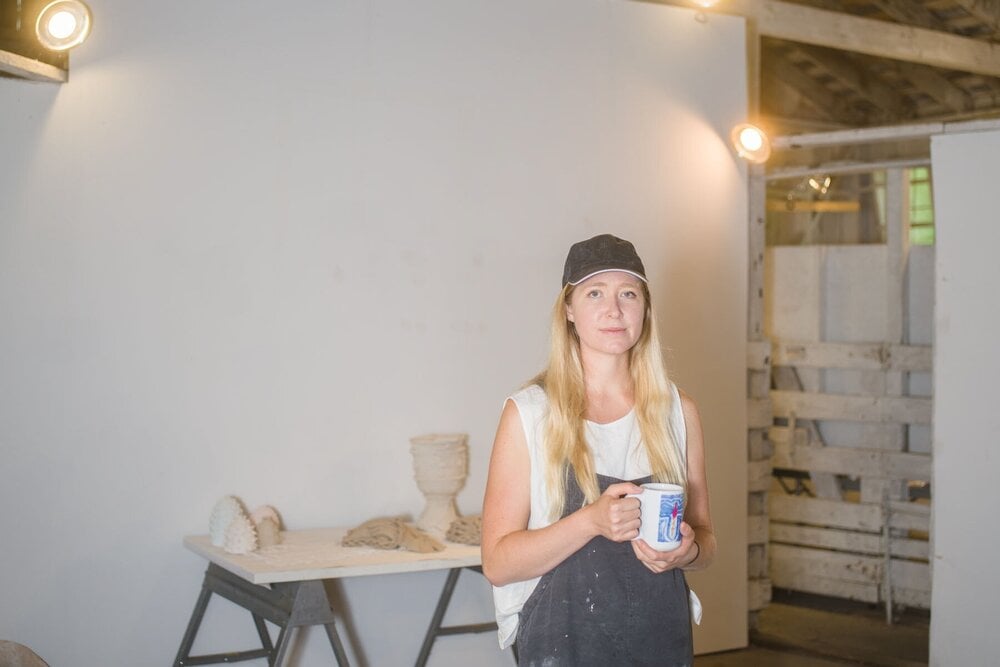
Artist Jen Dwyer in her ceramics studio. Courtesy of the Wassaic Project.
Depending on what I’m doing if I’m sculpting, throwing, drawing, or painting rather than planning, researching, writing, and responding to overdue emails, it can be easy to sit in the same place for hours at a time so that a whole day and night has gone by and I haven’t moved much (other than a morning walk or run).
I’ve found not moving throughout the day is hard on my body, so I’m trying to get into more of a routine of stretching throughout the day and taking short breaks after working for three or four hours. If I’m working on something I really don’t want to do, I try to reward myself with calling a friend, walking, checking social, or whatever. If I am doing something that I have to motivate myself to do, I give myself a limit of an hour or two of doing that task.
My morning ritual is to meditate, stretch, run, pull a daily tarot card (spirit animal tarot cards are my favorite at the moment), take a 30 minute break of some kind, work for four hours, take an hour break work for three or four hours and then cut myself off and go home.
I also will say the phone is such a helpful tool for me. I’m pretty introverted. I’ve found it is pretty easy for me to not talk or see anyone for long stretches of time. But I feel like for my mental health and happiness carving out that time to call a friend throughout the day is really important. It can definitely be hard to do though with looming deadlines, but I’m working on it.
—Jen Dwyer
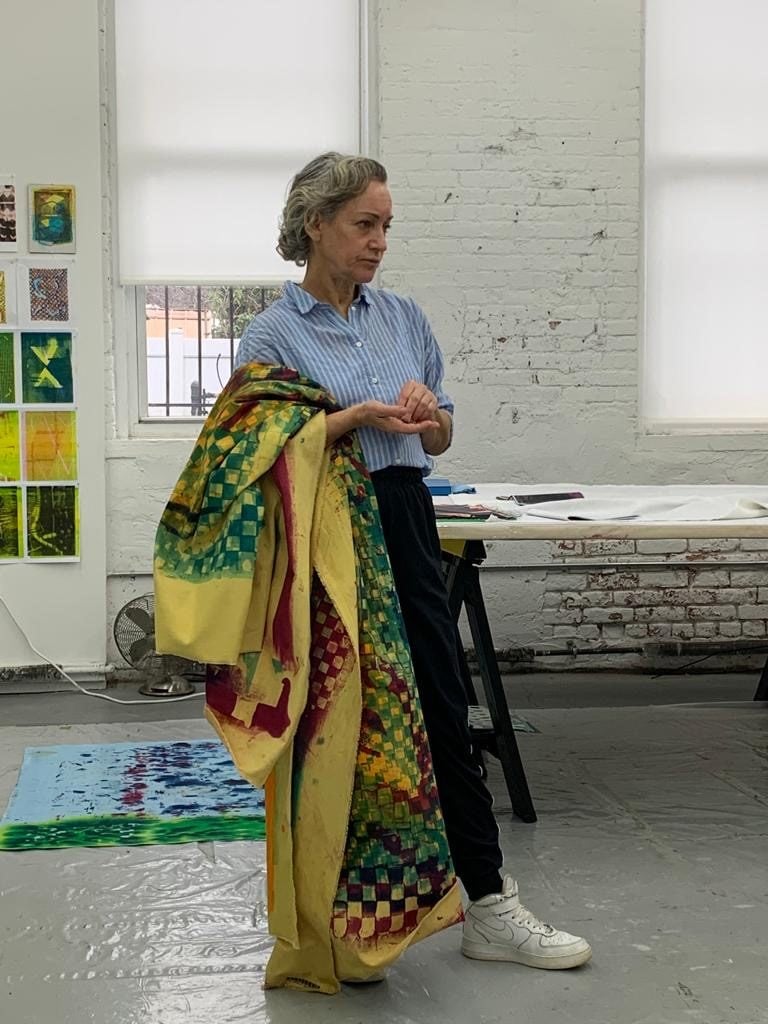
Cheryl Donegan in her home studio. Photo: Elaine Levy.
The irony is that I worked from home for over 20 years and then I just moved my studio to Brooklyn last year! I’ve been still trying to get there as long as the subway is still running, but I did bring a lot of portable projects home in case…
I want to be sensitive about this as—with many things—privilege is involved.
We’ve been talking here about how lucky we are—we have lived this type of life for years! When my kids were little I had to admit that being an artist and a parent working at a home studio was super convenient for getting things like laundry and cooking done! I could easily walk out of the studio to stir a pot, put in a load of laundry—but lucky me, I have a washer/dryer in my home. To some people that will just be salt in the wound… what are folks who use the laundromat supposed to do? We live in a loft—baby boomers—so we are not on top of each other. Again, I don’t want to put something out there that will just make folks feel bad!
But I remember when I was really young and lived with an actor on Canal Street. She was really jealous that I could roll out of bed and work in my space, but she needed to get hired to do hers. I recognized that and still cherish it. I can work when no one cares and no one is looking… and I have and do. And of course that is what it takes. Many artists in the past have said that they lived as if “a retiree” (Duchamp) or on “vacation” (Dubuffet or Miro, I think)… sort of the opposite of the “art worker,” and certainly the contrary of “business art”… but I guess no one is going to stop us now, as if they ever could.
—Cheryl Donegan
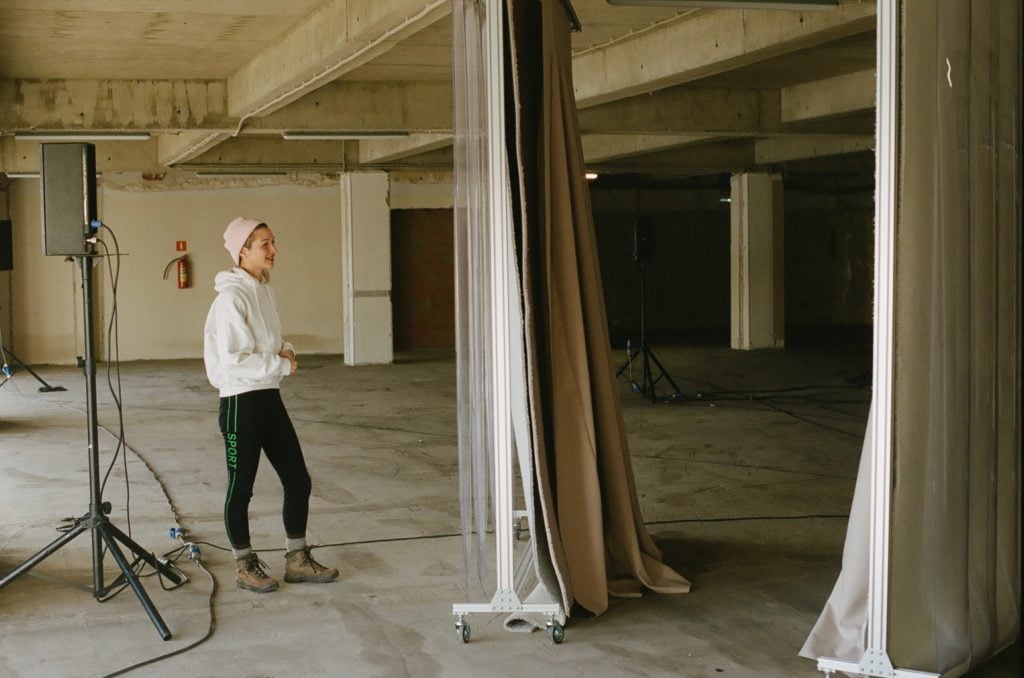
Jacqueline Kiyomi Gordon with one of her installations. Courtesy of the artist.
My big one right now is coming up with some kind of structure and taking appropriate breaks. Whatever hours in the day you like to work, keep to those—and don’t judge them. Mine right now are around 11 a.m.–4 p.m., then 8 p.m.–2 am. l like a long afternoon break to go for a walk, cook dinner, maybe watch some TV, but then go back to work. I also take a lot of breaks. But I have an informal list in my brain of break-appropriate activities, like making a snack while reading something dumb, walking around the block, cleaning one small part of my studio, looking up a new recipe to cook, etc. They are short 10–15 minute things that will get my mind off of work but are not so interesting that I don’t go back to work.
Another thing that’s good is making playlists for different activities or parts of my practice. I have different ones for morning emails, working on the computer, working in the studio, cleaning, etc., and I just repeat them. I do update, and they do change, but it’s super-helpful to focus.
—Jacqueline Kiyomi Gordon
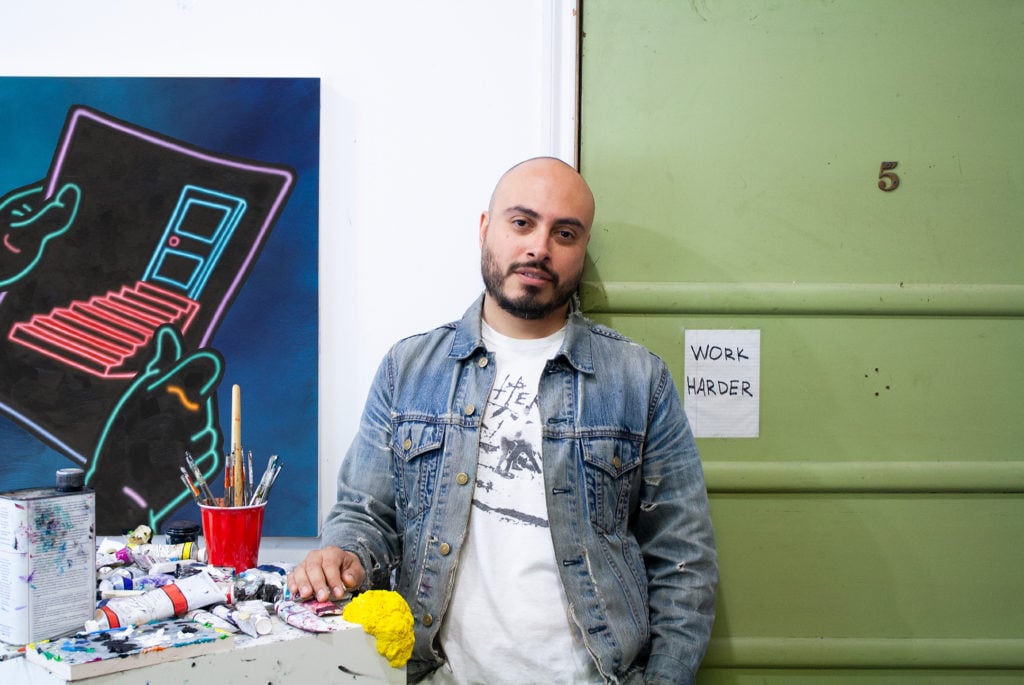
Arthur Peña shown in his studio. Photo by Blithe Parsons, courtesy of the artist.
Accepting the isolation that a studio practice already requires is nothing new. However, collapsing two spaces, live/work, into one presents specific challenges and in my experience, forces one to confront the very nature of why they make.
My initial experience working from home was a forced situation where I found myself with no studio. My reliable kitchen table ended up housing multiple oil paintings. I would lean paintings atop my stove to get a good look at them. After more than a few months, I moved into a large warehouse (approximately 2,000 square feet) in Dallas where I made half of it a live/work studio. Raw with cement floors, the space was the ideal setup for any artist whose only concerns revolved around their practice—and not necessarily the spiders that gathered in the shared bathroom or corners of the large room they slept in.
The entirety of the three years which I lived with my work mostly revolved around negotiating with a sense of guilt for not working at all hours of the day and knowing when to stop working so that I could have some sense of life outside my head. (I moved to the Bronx in June. My new studio is just over the 3rd Ave Bridge in South Bronx, about 18 minutes away from my home.)
I would employ various well-worn tactics like turning work around or hiding it so I wouldn’t have to look at it, maintaining a hard start-and-stop schedule or working through a daily checklist so I wouldn’t overburden myself. These are all very practical. But how much practicality really belongs in the studio? These exercises also made work feel like a job, which, honestly, fuck that.
These current circumstance in which artists find themselves—having to potentially move their studio into their home—directly challenges the escapism that making art and going to a studio provides. I was never one to keep a sketch book or incessantly doodle; my role as an artist was simply a truth. I think that was my biggest takeaway from living in my studio. Sometimes you just need to not make for a while. Does one stop being an artist if they are not making? This is a deeply personal question that arose from the pressure of being surrounded by my work. Be prepared for this.
Lastly, living in my studio, I found an unexpected challenge was confronting my need to do something all the time and constantly stay busy. Why? The obvious answer was the subversion of the constant specter of death but, by its practical nature, that is what this self-quarantine is all about. In hindsight, living with your work/in your studio doesn’t mean that you have to make more; it really means that you have the time to make more slowly. Pace yourself, you have nowhere else to go. This echoes both the reality of these challenging times and the fact that you are always you.
—Arthur Peña
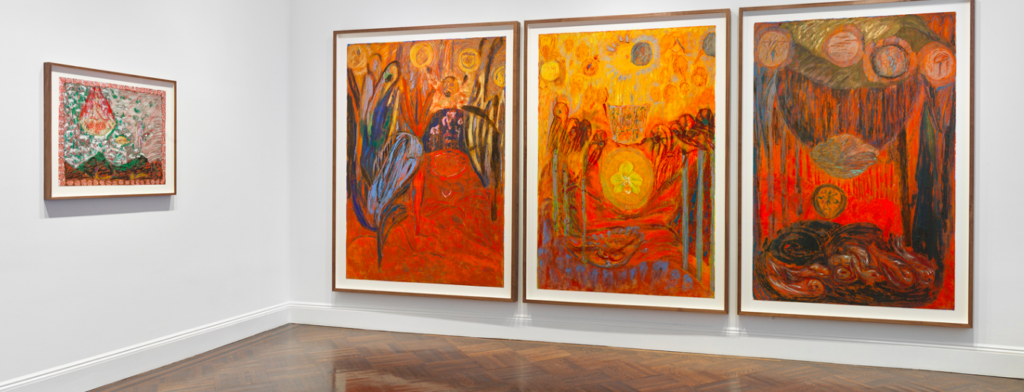
Installation view of “Mimi Lauter Symphony No. 1,” New York, 2020, Photo: Genevieve Hanson.
For me, the key is having a strict schedule, compartmentalizing time for work versus time for everything else, and knowing what I need to accomplish each day in the studio. I get up in the morning between 6:30 a.m. and 7 a.m. and I spend two hours in my garden. That time is dedicated to physical work, relaxation, and thinking about everything in my life, good and bad, personal and professional. By 9 a.m. I’m in the studio and I immediately begin working. Before I leave the studio in the evening for dinner, I always survey the studio and plan the first task that I’ll accomplish the next morning. I never work after dinner.
I think artists work best when they feel that they can shut out the rest of the world, that’s why so many artists work late at night or early in the morning. So this new reality of the rest of the world slowing down should help us all focus. Maybe a lot of non-artists out there will start producing something creative! More art, more literature, and more music might come out of this. Hopefully a sparkling silver lining.
—Mimi Lauter
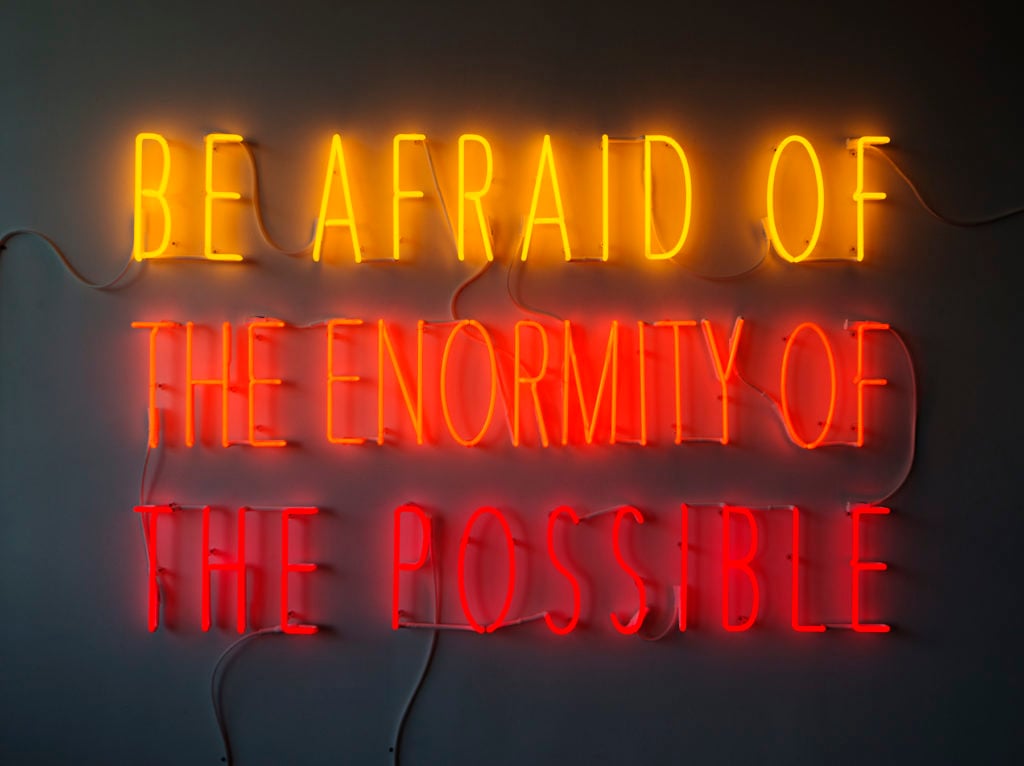
Alfredo Jaar, Be Afraid (2015). Courtesy of the artist.
The first one is based on a text by Emile Cioran, the poet of pessimism.
It says “Be afraid of the enormity of the possible.”
I created this work in 2015.
The second one is based on the last words of The Unnamable by Beckett.
It says “I can’t go on. I’ll go on.”
I created this work in 2016.
These two works express everything I can say right now.
—Alfredo Jaar